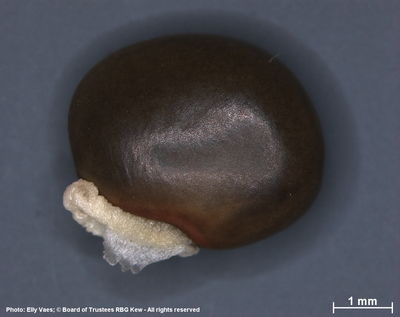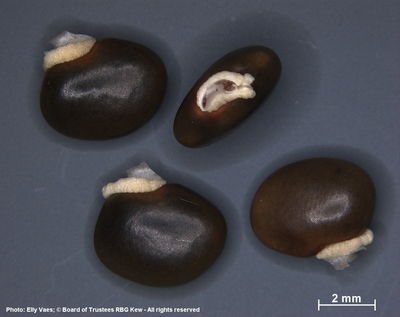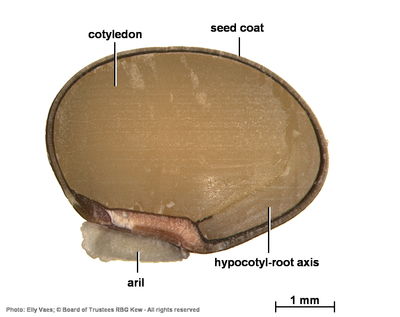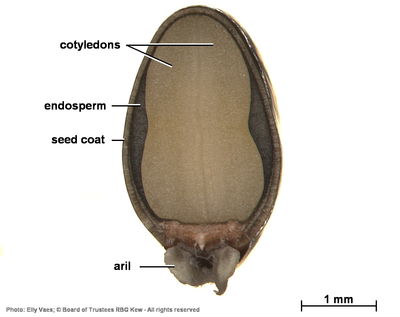Geography and distribution
Ophrestia madagascariensis is native to northwestern Madagascar. It grows in dry deciduous woodland, woodland margins, grassland, and degraded or secondary forest, on sand, clay and limestone, and sometimes in damp areas.
Description
Overview: Perennial vine up to 2 m tall, sometimes forming tangled clumps over supporting vegetation.
Leaves: Divided into 5 or 7 leaflets with soft hairs on the upper side.
Flowers: Produced between January and March, 4-7 mm long, pale lilac with a white standard (the largest of the five petals).
Fruits and seeds: Narrowly oblong pods (fruits) up to 5.5 cm long, each containing 6 to 8 seeds. Seeds are brownish-green and approximately 4.6×2.2 mm.
Threats and conservation
Ophrestia madagascariensis is listed as Near Threatened (NT) according to IUCN Red List criteria.
The major threat is to its habitat, namely the dry deciduous forest, which is subject to destruction and fragmentation due to intentional burning to clear land for grazing and agricultural use and wildfires sparked by burning adjacent secondary grasslands. It has been estimated that the western dry forest in Madagascar has been reduced by approximately 40% since the 1970s.
Conservation assessments carried out by Kew
Ophrestia madagascariensis is being monitored as part of the IUCN 'Sampled Red List Index for Plants' project, which aims to produce conservation assessments for a representative sample of the world's plant species. This information will then be used to monitor trends in extinction risk and help focus conservation efforts where they are needed most.
Millennium Seed Bank: Seed storage
The Millennium Seed Bank Partnership aims to save plant life worldwide, focusing on plants under threat and those of most use in the future. Seeds are dried, packaged and stored at a sub-zero temperature in our seed bank vault.
Three collections of Ophrestia madagascariensis seeds are held in Kew's Millennium Seed Bank based at Wakehurst in West Sussex.
Further information on Ophrestia madagascariensis seeds can be found in Kew's Seed Information Database.
This species at Kew
Ophrestia madagascariensis is grown in Kew's behind-the-scenes Tropical Nursery.






